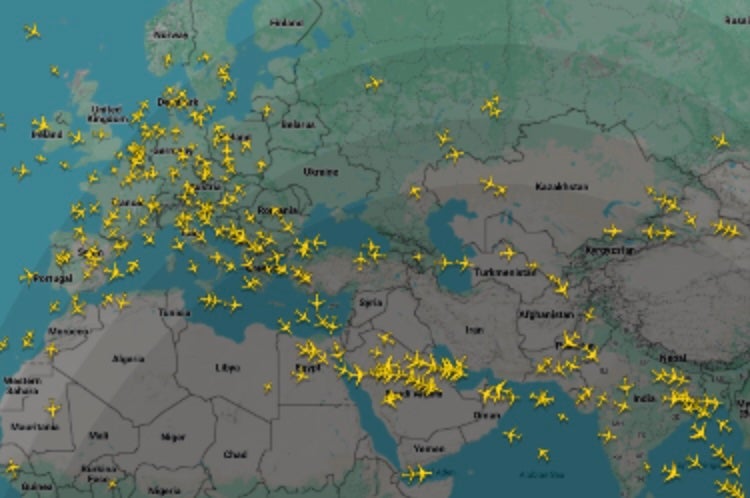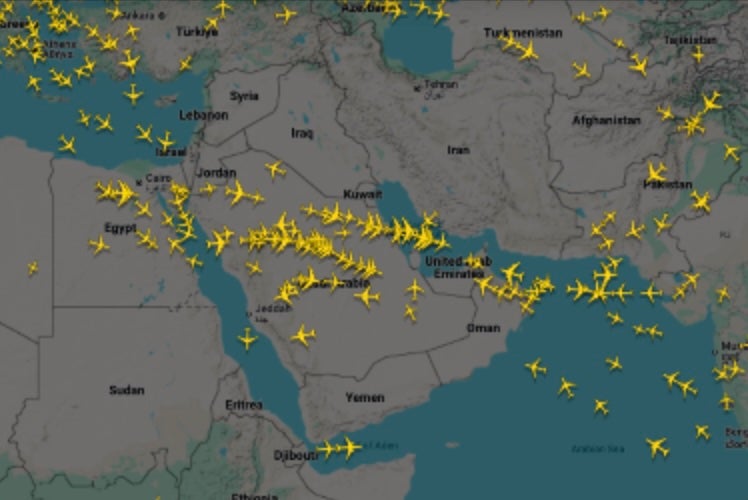A stunning map of current global flight routes has shown the lengths pilots have to go through to avoid conflict zones.
As the Russia-Ukraine war rages on and the Israel-Iran conflict intensifies, the world has become more chaotic, and so has its airspace.
A live flight tracking map from Flightradar24 showed planes bustling in western Europe and most of Asia. But there are startling holes in the map, which happen to be where the world’s major conflicts are currently taking place.
Ukraine had no planes in its airspace, and there were very few planes flying over Russia late Friday afternoon, according to Flightradar24’s map.
Some Middle Eastern countries, including Israel, Iran and the surrounding nations of Lebanon, Syria, Iraq and Kuwait, also had no flights coming in or out based on the map.

The lack of air travel can be linked to the air strikes Russia and Ukraine as well as Israel and Iran have been launching against each other in respective conflicts.
It’s been more than three years since Russian President Vladimir Putin launched a full-scale invasion of Ukraine. The missile and drone strikes and their counterattacks have been non-stop.
Earlier this week, Russia launched an overnight attack on Kyiv, killing 28 people and injuring over 100 more, The Associated Press reported, citing local officials.
Israel had already been at war with Hamas when it struck Iran’s nuclear facilities and hit military targets in the region last Friday. The attacks killed several of Tehran’s top military leaders and leading nuclear scientists, and Iran subsequently launched heavy retaliatory strikes against Israel.

Delta Air Lines and United Airlines have suspended flights to Tel Aviv amid the strikes, The Independent reported last week. On Thursday, United suspended flights to Dubai and American Airlines suspended flights to Doha, Qatar, CBS News reported.
Besides man-made conflict, natural disasters can also make the jobs of pilots more difficult.
Indonesia’s Mount Lewotobi Laki Laki volcano, east of Bali, erupted Tuesday, causing significant flight cancellations.
“Airspace closures have become quite common,” Singapore-based aviation consultant Brendan Sobie told CNN. “It’s almost like the new normal for airlines to have to navigate this kind of thing.”

 2 hours ago
3
2 hours ago
3









